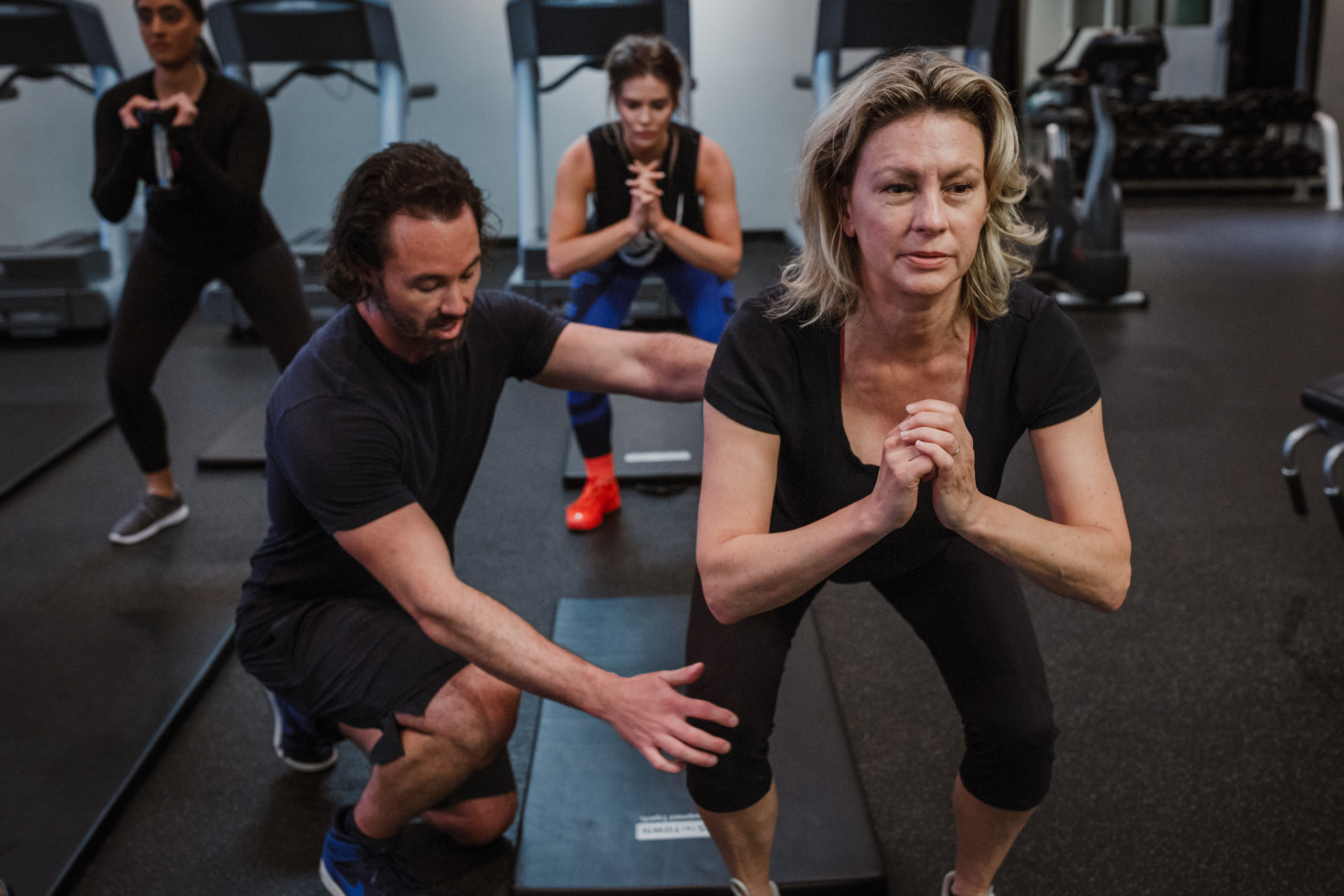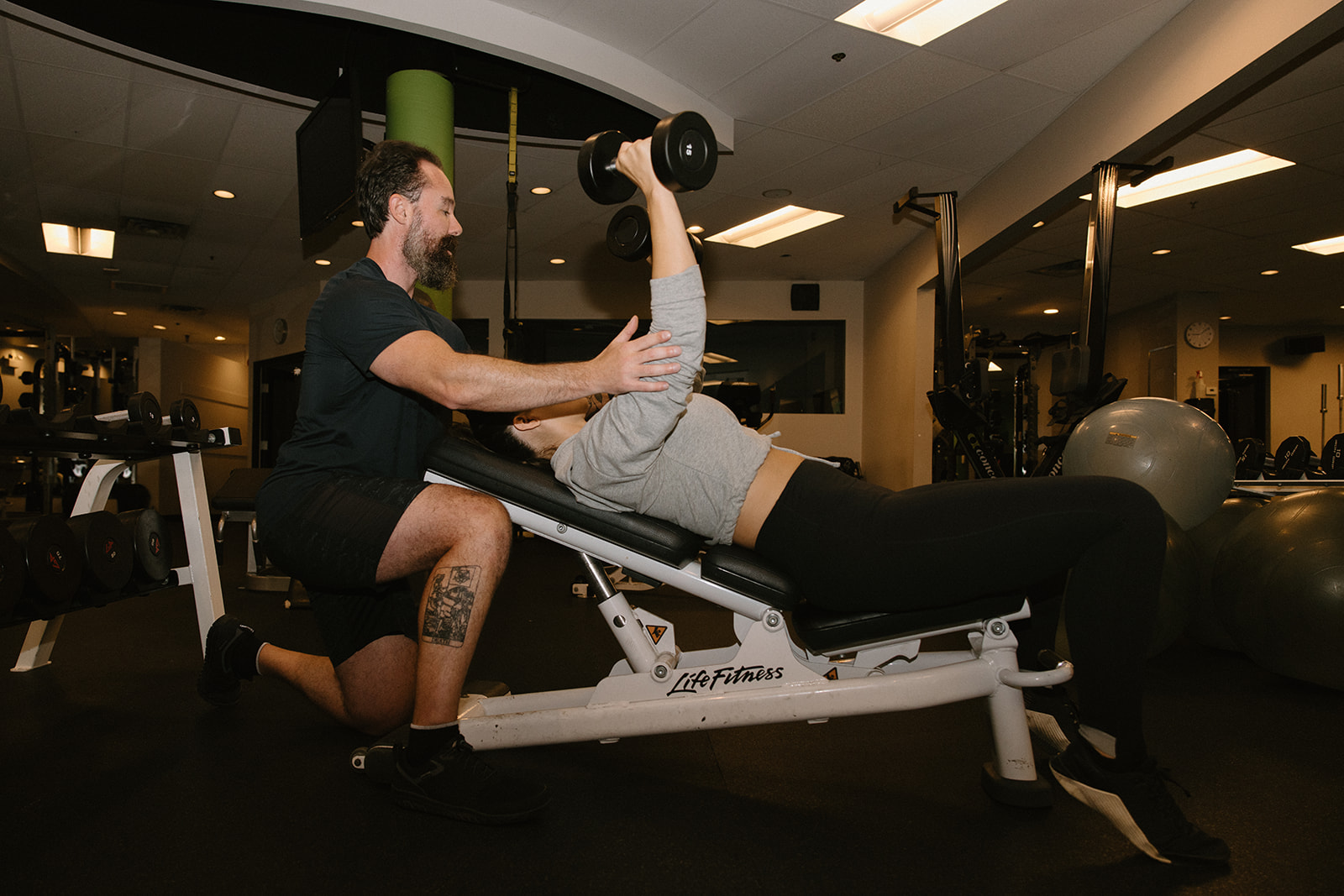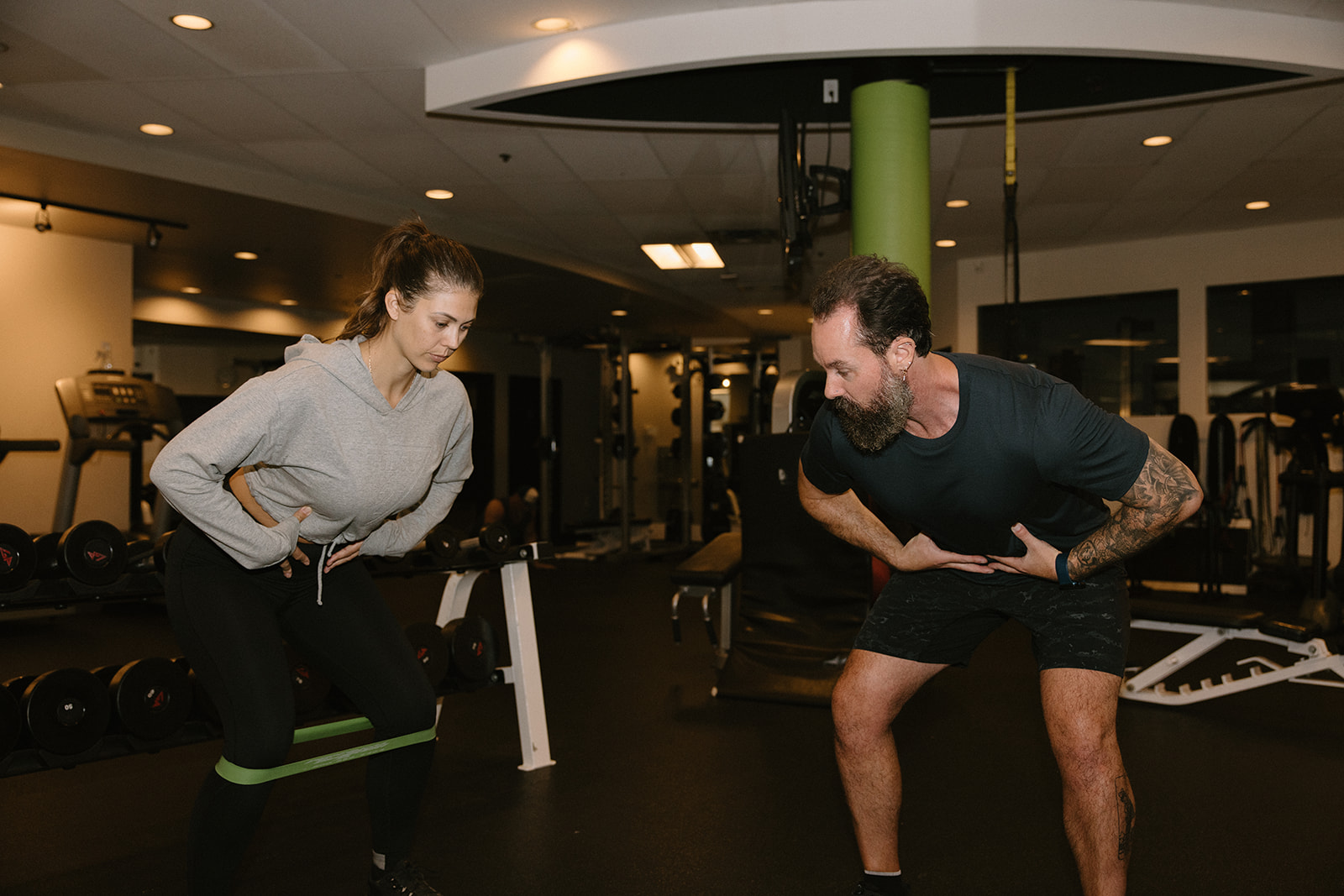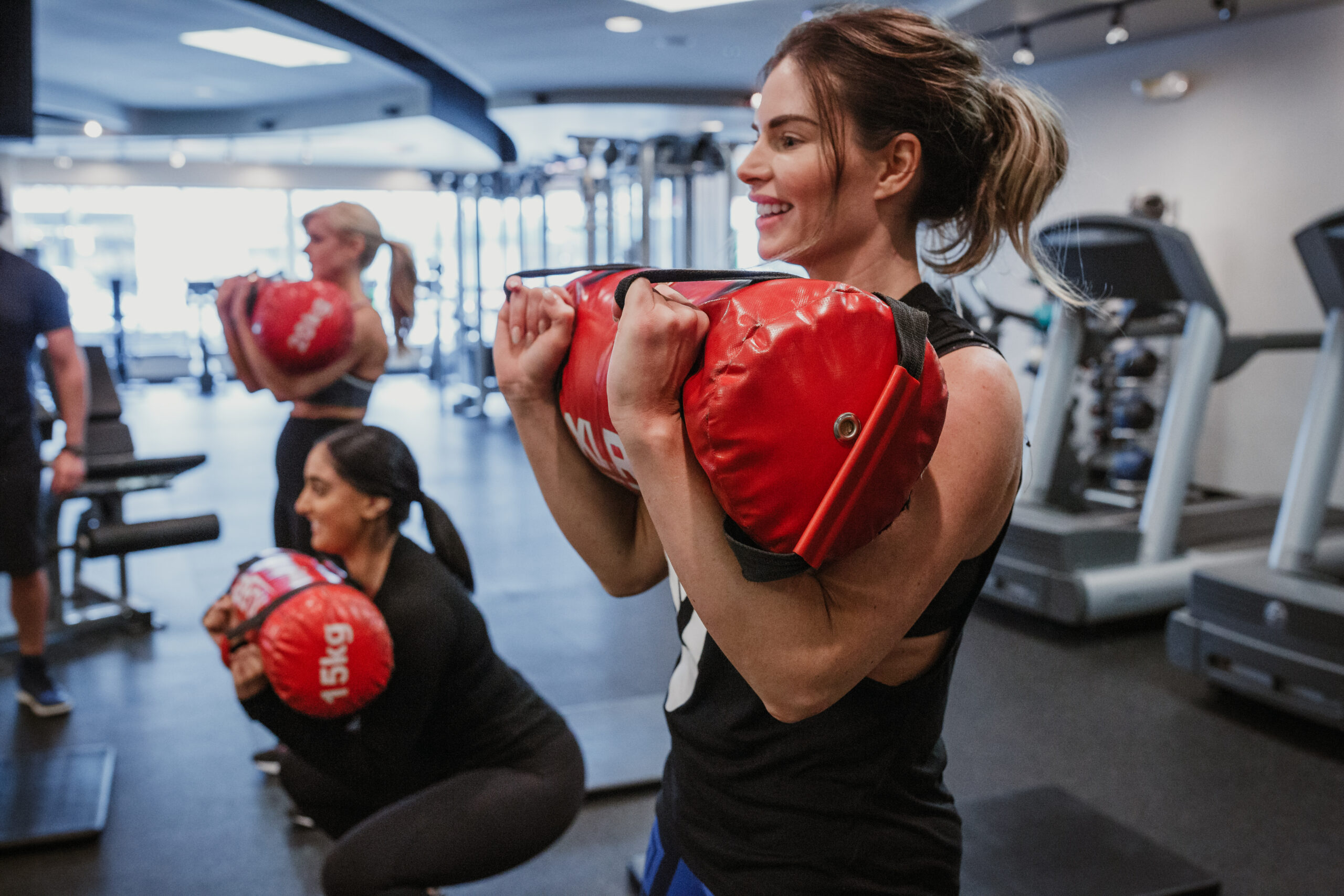Maximizing Health: Why Is Resistance Training Important for Your Routine?
Why is resistance training important? For starters, it fortifies muscles, fends off the effects of aging, accelerates your metabolism, and strengthens bones. It also serves as an ally for your mental well-being, combating stress and elevating confidence. As we break down these perks, you’ll gain insights on how to weave resistance training into your daily routine without it feeling like a chore.
Key Takeaways
- Resistance training is critical for counteracting age-related muscle loss, enhancing metabolic rate and metabolic health, as well as improving bone density to combat conditions like osteoporosis.
- Mental health benefits of resistance training include stress reduction, anxiety relief, and boosts in self-esteem and mood due to physiological changes and increased endorphins.
- Resistance training aids in effective weight loss and prevention of weight regain by increasing lean muscle mass, thus raising resting metabolic rate and improving insulin sensitivity.
Unlocking the Benefits of Resistance Training

If you think resistance training is all about bulging biceps and six-pack abs, think again. It’s like a symphony, each exercise playing its part to create a harmonious, stronger, and healthier you. The health benefits of resistance training go beyond just muscle strengthening. It’s about enhancing your overall physical health and vitality, making everyday tasks easier and more enjoyable.
Resistance training serves as a reliable companion in your fight against time. As we age, muscle mass tends to decrease, a condition known as sarcopenia. But regular resistance training exercises can help counter muscle loss, keeping you active and independent as you age. And the benefits don’t stop there. Resistance training can elevate lean weight, enhance resting metabolic rate, and contribute to fat weight reduction. This form of training converts your body into a calorie incinerator, even during rest periods.
Enhances Muscular Strength and Endurance

Remember the last time you struggled to open a jar of pickles or carry your grocery bags? These are all movements that require muscle strength and endurance. Resistance training exercises can help you breeze through these everyday tasks with ease.
Resistance training enhances muscle size and strength through cellular and neural adaptations, including improvements in maximal force production and muscle activation. Consider it as providing a power-up to your muscles, enhancing their strength and efficiency. Initial strength gains from resistance training are often rapid, attributed to learning the movements; continued muscle growth leads to ongoing strength and endurance improvements.
Amplifies Metabolic Rate

You’ve probably heard of metabolism – it’s the process by which your body converts what you eat and drink into energy. Are you aware that resistance training can significantly elevate your metabolism, resulting in higher calorie burn, even while resting?
Resistance training increases muscle size, which in turn raises your resting metabolic rate (RMR) and can lead to sustained fat loss over time. Consider it as possessing a secret tool in your fight against abdominal fat. And the best part? The increase in metabolic rate is not driven by hormonal changes, such as insulin and thyroid hormones. Instead, it’s attributed to both heightened sympathetic nervous system activity and an increase in fat-free mass.
In fact, resistance training is more effective for improving metabolism than aerobic exercise.
Supports Bone Health
If you’ve been assuming resistance training only benefits muscles, it’s time to reconsider. This form of training also serves as a robust supporter for your bones. Resistance training can lead to a 1% to 3% increase in bone mineral density, beneficial in preventing osteoporosis.
The benefits of resistance training for bone health include:
- Stimulating bone formation
- Slowing down bone resorption
- Boosting bone mass and strength
- Protecting bones from the wear and tear of aging
- Site-specific gains, with the largest improvements in loaded skeletal regions.
The Psychological Edge of Lifting Weights

Resistance training isn’t just about physical strength. It also packs a powerful punch for your mental well-being. Lifting weights can help alleviate stress, reduce anxiety, and even boost self-esteem. Consider it as a therapeutic session where you lift weights instead of lying on a couch.
Strength training has several benefits for mental health, including:
- Increasing endorphins, your body’s natural mood boosters
- Positively influencing the brain, which can enhance mood and help with symptoms of depression
- Acting as a natural stimulant, enhancing mood and energy levels
- Reducing anxiety, with beneficial effects observed across various populations and through changes in cortisol and the HPA axis.
Alleviates Stress and Anxiety
In our fast-paced, high-stress world, anxiety is a common affliction. But did you know that resistance training can help alleviate stress and anxiety? Low-to-moderate intensity resistance exercise can result in acute decreases in state anxiety.
Resistance training influences the hypothalamic-pituitary-adrenal (HPA) axis and cortisol levels, mediating the body’s response to stress and potentially impacting blood pressure. Consider it as a mental break, facilitating relaxation and a sense of calm. Consistent resistance training promotes relaxation and acts as a stress reliever, aiding in overall mental well-being.
Boosts Self-Esteem and Confidence
Beyond the physical benefits, resistance training can also give your self-esteem a boost. Regular resistance training can increase self-esteem, self-efficacy, and overall confidence. This form of training functions like a shot of confidence, making you feel more empowered and competent.
Studies show that both single-bout sessions and long-term resistance training programs can lead to psychological benefits, including a rise in self-esteem. Resistance training not only affects physical ability but also positively impacts cognitive abilities like self-esteem. So, the next time you lift weights, know that you’re also lifting your spirits.
Resistance Training as a Weight Loss Ally

Resistance training isn’t just about building muscle – it’s also a powerful ally in your weight loss journey. Engaging in resistance training may reduce body fat levels, including deep visceral fat, while preserving fat-free mass, helping you to lose fat effectively.
Resistance training contributes to the prevention and management of type 2 diabetes through improved insulin sensitivity and decreased visceral fat. Consider it as a secret tool in your weight loss toolkit, bolstering your fat loss initiatives and preventing weight rebound.
Complements Fat Loss Efforts
Ever wondered why some people seem to lose weight more easily than others? The answer may lie in resistance training. Resistance training increases lean muscle mass, which indirectly contributes to losing body fat by slightly decreasing body fat percentage without changing absolute fat mass or overall body weight.
An effective resistance training program for fat loss includes high intensity, sufficient exercise volume, and progression to steadily increase the challenge. Plus, for older adults with obesity, resistance training is crucial as it builds muscle and mitigates muscle mass loss during weight loss, improving muscle-to-body mass ratio.
Prevents Weight Regain
One of the greatest challenges of weight loss is maintaining it. But here’s the good news – resistance training can help prevent weight regain. Combining resistance training with a healthy diet enhances the loss of excess body fat, which is crucial in preventing weight regain.
Regular exercise may be necessary to prevent weight regain, with a recommendation of relatively large volumes of exercise (≥250 minutes per week). Plus, the ‘after-burn effect’ or excess post-exercise oxygen consumption (EPOC) from resistance training contributes to long-term weight control by increasing calorie burn after a workout session.
Incorporating Resistance Training Into Your Life
The beauty of resistance training is its versatility. It can be as simple as bodyweight exercises or as complex as lifting free weights at the gym. No matter if you’re a busy professional, a stay-at-home parent, or a senior citizen, resistance training can be seamlessly incorporated into your lifestyle.
Incorporating resistance training can begin by focusing on movements in daily life that prove challenging in order to improve strength in those specific areas. Some practical ways to implement resistance training without needing to purchase equipment include:
- Using bodyweight exercises
- Using household items as weights
- Using resistance bands
- Using water bottles or cans as weights
These options can help you get started with resistance training and improve your strength through strength training exercises.
Starting with the Basics
If you’re a beginner at resistance training, there’s no need to worry. You don’t need fancy gym equipment or a personal trainer to start. Simple bodyweight exercises like push-ups, squats, and lunges can help build a foundation for strength.
Upper body strength for beginners can be developed through exercises such as tricep dips, push-ups, and side planks. To strengthen the lower body, beginners can perform squats, side lunges, back lunges with lifts, and curtsy lunges, which target the legs and glutes without equipment. As you gain strength, you should progress to lifting weights, starting with an amount you can comfortably lift 12 to 15 times, and gradually increasing the weight over time.
Designing a Balanced Workout Routine
Once the basics are under your belt, it’s time to craft a well-rounded workout routine. A balanced workout routine should include:
- An upper body pushing movement
- An upper body pulling movement
- A torso exercise
- A lower body exercise
This will target all major muscle groups.
Incorporating a variety of exercises into a routine is crucial as no single method of training provides all the necessary benefits, and combining aerobic activities with strength training covers all fitness needs. Adults are recommended to include moderate aerobic exercise for 150 minutes per week and two or more strength training sessions per week, with at least 48 hours between sessions focused on the same muscle group, to ensure muscle recovery and prevent imbalances or injuries.
Safety First: Tips for Effective Resistance Training
While resistance training offers significant benefits, it’s equally important to ensure safe practice. Maintaining proper form, employing the right technique, and attuning to your body are essential to prevent injuries and optimize workout effectiveness.
Before beginning any resistance training regime, individuals with medical conditions, disabilities, or those new to exercise should seek guidance from a healthcare provider. Resistance training should not be done every single day; rest is crucial. The CDC advises a minimum of two days per week, while suggesting that additional days can be added as long as adequate rest is taken and one listens to the body’s feedback.
Proper Form and Technique
Lifting weights can be empowering, but it’s crucial to maintain proper form and technique. Proper form in resistance training is essential for preventing injuries and for the effective targeting of muscles.
Learning and maintaining proper technique can improve overall performance and results from resistance training exercises. Proper technique involves:
- Aligning the body correctly
- Moving smoothly through an exercise’s full range of motion
- Utilizing a full range of motion in exercises, such as full-depth push-ups and squats, to ensure exercise effectiveness and avoid injury.
Listening to Your Body
When it comes to resistance training, listening to your body is key. Resting between sessions is crucial to avoid the risk of exercising the same muscles two days in a row, which is important for muscle recovery and growth.
Stopping exercise at the first sign of pain or discomfort is key to prevent further injury and allows for the necessary recovery time. Here are some tips to help you exercise safely:
- Start each workout with a warm-up to loosen muscles.
- End with a cool-down incorporating stretches to prevent stiffness.
- Perform weight training movements in a controlled, unhurried manner to focus on the targeted muscles and reduce the chance of using momentum, enhancing safety.
Resistance Training Across the Lifespan
Resistance training isn’t exclusively for the young or those already in shape. It’s a lifelong journey that benefits individuals of all ages, from children to older adults. Resistance training is integral in maintaining a high quality of life during the aging process through enhanced strength and functionality.
For older adults, resistance training is crucial for preserving muscle mass, improving mobility, and thereby increasing the amount of healthy, independent years of life. Low-intensity strength and walking programs can deliver significant benefits for older adults, such as enhanced balance and coordination.
For Children and Adolescents
Resistance training isn’t limited to adults. In fact, children and adolescents can greatly benefit from it. Resistance training enhances aspects of ‘the self’ in young people, leading to improved:
- Resistance training self-efficacy
- Perceived physical strength
- Physical self-worth
- Overall global self-worth
Children and adolescents can increase their strength by 30% to 50% after just 8 to 12 weeks of a well-designed resistance training program, reducing their risk of sports-related injuries. To ensure safety during resistance training, it is essential for young athletes to have proper supervision, use appropriate equipment, and follow a program based on recommended guidelines.
For Older Adults
With aging, the importance of maintaining physical health escalates. Resistance training is important for older adults to maintain muscle mass, improve balance, and enhance overall quality of life.
Improved balance, a benefit of resistance training, reduces the risk of falls among older adults and can be further supported by exercises that specifically target stability. Adhering to a schedule of resistance training 2 to 3 nonconsecutive days per week is recommended for older adults to see optimal benefits, and stopping the program can lead to regression of strength.
Summary
In conclusion, resistance training is more than just a tool for building muscle. From improving muscle strength and bone health to boosting metabolism and mental well-being, resistance training is a powerful ally in your journey to better health. Whether you’re young or old, fit or a beginner, it’s never too late to start. So pick up those weights and start your resistance training journey today!
Ready to elevate your health and fitness journey with expert guidance?
Book a free five-minute call with TurnFit and take the first step towards a stronger, healthier you. Don’t wait to transform your life – seize this opportunity and connect with us today! Click Here
Frequently Asked Questions
What is importance of resistance training?
Resistance training is important because it helps improve muscle strength and tone, maintain flexibility and balance, and manage weight by increasing muscle-to-fat ratio, ultimately contributing to overall health and well-being.
What are 6 benefits of resistance training?
Resistance training can improve your health in numerous ways, including increasing muscle strength, improving bone density, boosting metabolism, enhancing mood, reducing injury risk, and promoting better sleep. These benefits make it an essential component of any fitness routine.
Why is resistance training more important than cardio?
Resistance training is more important than cardio because it leads to a higher calorie burn throughout the day, even after the workout ends, due to the constant breakdown and rebuilding of muscle. It also increases resting metabolic rate compared to aerobic exercise alone or combined aerobic and resistance exercise (2020 systematic review).
How does resistance training boost metabolism?
Resistance training boosts metabolism by increasing muscle size, which raises your resting metabolic rate (RMR) and supports sustained fat loss over time.
Can older adults do resistance training?
Yes, older adults can definitely do resistance training as it helps preserve muscle mass, improve balance, and enhance overall quality of life.
Sources:
- The Importance of Muscle Strength in Aging
- The Metabolic Effects of Resistance Training
- Resistance Training and Bone Health
- Psychological Benefits of Strength Training
- Resistance Training for Weight Loss
- Incorporating Resistance Training into Your Routine
- Safety and Resistance Training
- Resistance Training Across Lifespan



